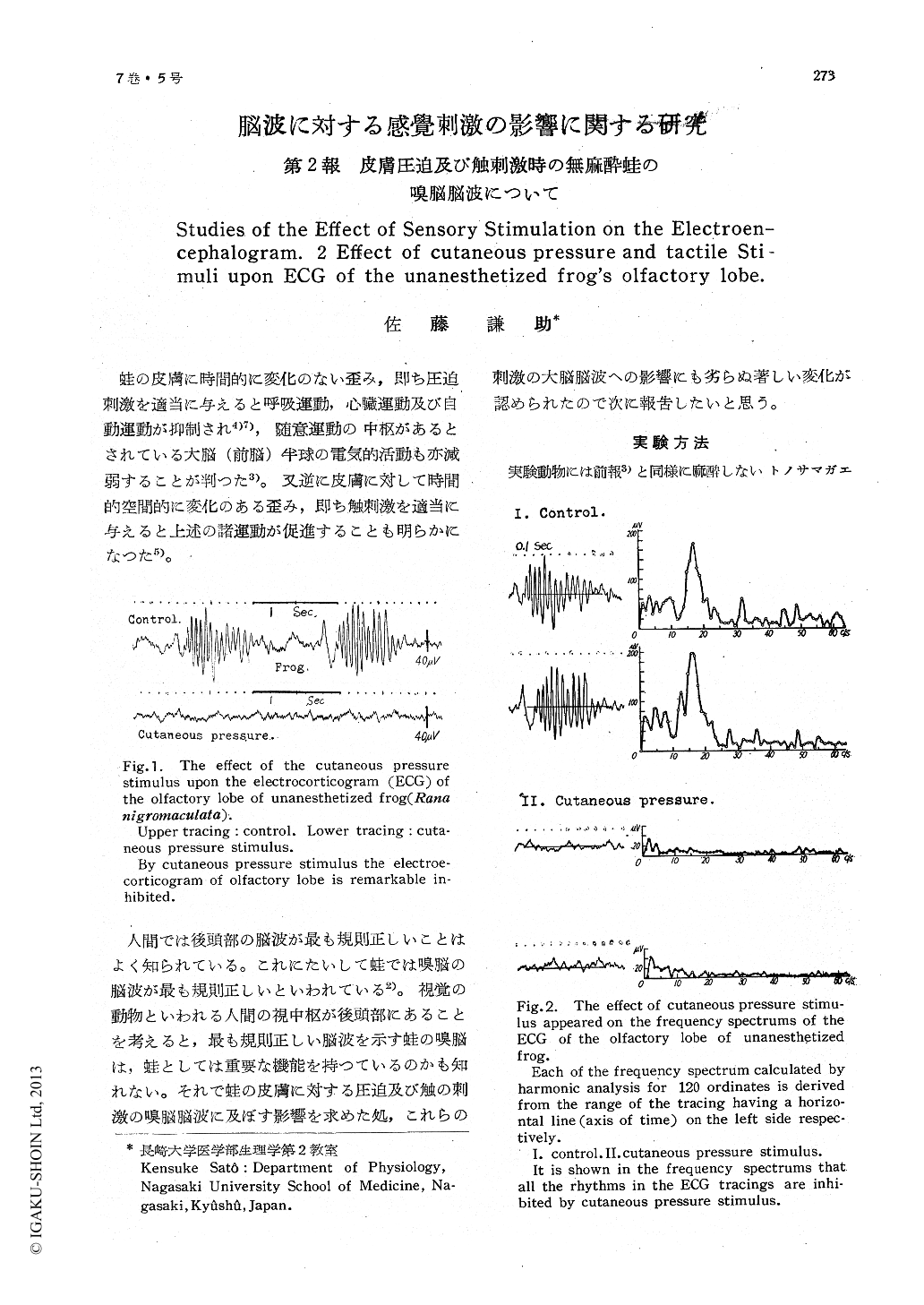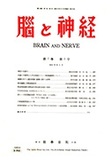Japanese
English
- 有料閲覧
- Abstract 文献概要
- 1ページ目 Look Inside
蛙の皮膚に時間的に変化のない歪み,即ち圧迫刺激を適当に与えると呼吸運動,心臟運動及び自動運動が抑制され4)7),随意運動の中枢があるとされている大脳(前脳)半球の電気的活動も亦減弱することが判つた3)。又逆に皮膚に対して時間的空間的に変化のある歪み,即ち触刺激を適当に与えると上述の諸運動が促進することも明らかになつた5)。
人間では後頭部の脳波が最も規則正しいことはよく知られている。これにたいして蛙では嗅脳の脳波が最も規則正しいといわれている2)。視覚の動物といわれる人間の視中枢が後頭部にあることを考えると,最も規則正しい脳波を示す蛙の嗅脳は,蛙としては重要な機能を持つているのかも知れない。それで蛙の皮膚に対する圧迫及び触の刺激の嗅脳脳波に及ぼす影響を求めた処,これらの刺激の大脳脳波への影響にも劣らぬ著しい変化が認められたので次に報告したいと思う。
The effect of cutaneous pressure and tactile stimulus upon the electrocorticogram (ECG) of unanesthetized frog's olfactory lobe was obser-ved ; and the results obtained are as follows.
1. Spindle wave pattern is seen in the ECG tracings led from the unanesthetized frog's ol-factory lobes. It is blocked by the more rapid and minute waves superposed on slow irregu-lar fluctuations. Furthermore, a large negative and positive diphasic swing appears suggesting some unknown relationship to the spindle wave pattern (Fig.1 and 3).
2. Not only the spindle wave pattern, but also slower and more rapid waves are also in-hibited by cutaneous pressure stimulus (Fig.1 and 2).The number of the peaks in the freque-ncyspectrums also decreases (Fig. 2).
3. Tactile stimuli on the skin, however, cause an enhancement of the spindle wave patterns in magnitude (Fig.3 and 4) following the incre-ment in the number of the peaks in the frequen cyspectrum.
4. From thea above results it is evident that the electrical activity of the olfactory center is affected by cutaneous afferent impulses caused by cutaneous pressure and tactile stimulations.

Copyright © 1955, Igaku-Shoin Ltd. All rights reserved.


